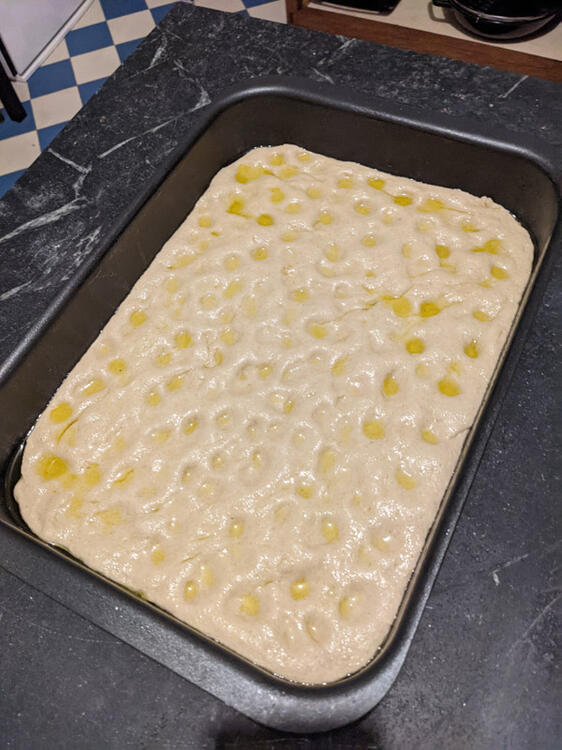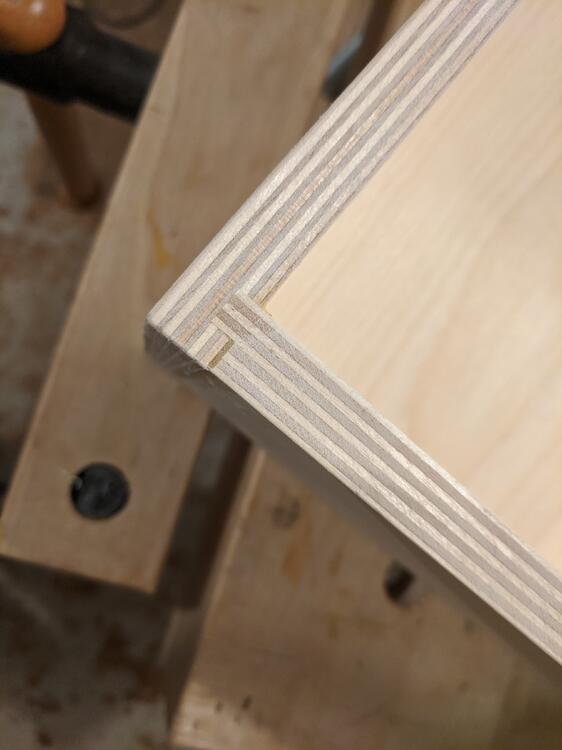-
Posts
4,756 -
Joined
-
Days Won
60
Content Type
Profiles
Forums
Events
Everything posted by dsavitsk
-
-
Happy birthday!
-
What are you planning to use to hang them?
-
I've tried every shortcut to making bb drawers, from pocket holes to dominos to biscuits. In the end, I found that an actual joint was both faster and more accurate than any of them. And more satisfying. And probably stronger.
-
A broken clock is still correct twice a day 🙂 Really, if you did the initial alignment with a good square, there's no reason you wouldn't get it right on the first shot.
-
Probably in stock, and I think they are working to keep the core tools in stock. They have a phone and are good about answering it. https://www.lie-nielsen.com/pages/tool-availability-covid-19 Those are both great planes. I use mine all the time. I'd recommend the hotdog to go with the 62. Also the honing guide
-
Happy Birthday, Steve!
-
Indeed. I suspect Sennheiser was aware of its own financial position before authorizing the drop models. They probably had been neither manufacturing nor selling many of those models for years.
-
I'm the opposite - with power tools*, I prefer to take the work to the tool whenever possible. But Nate is correct that downward pressure (and a very flat work piece) are necessary, as are the necessary safety precautions. I don't think either is correct, just what you are comfortable with, and what your tools will allow. * really, you should probably use a plow plane for this ...
-
You'd still probably align them the same way. Put them in the slots, put some double sided tape on them, set the sled on top, flip it over and drill pilot holes through the threaded inserts, or just trace around the rail to find its position. If they are sufficiently slop free, they shouldn't need to be very long. I've used the incra version. They are fine, but I usually just end up using wood rails instead. That said, I have never built a forever sled. I build sleds as needed for particular projects, so I don't care if the rails swell in 6 months as it will be in the trash by then. This is probably not a best practice, though. FWIW, I do like Microjig. This is one of my favorite things: https://www.microjig.com/collections/grr-rip-block
-
Even if Cardas paid me to use theirs, I'd use a $1.25 part from Mouser instead.
-
4 or 5 hours should be fine. For glue to trip the saw, it needs to create a path to ground. Merely encountering even wet glue in a joint won't cause a trigger. Similarly, hitting a nail won't cause it to trip unless the nail is also touching something else (the table top, you, a metal fence, etc.) It's why wet wood can cause a trigger as the wetness connects the blade to the table top. There is a test feature so you can see if something will cause it to trip before turning it on.
-
Delrin definitely lasers better. Danger is that it burns with an invisible flame, so if it catches you don't know until it's gone. Blank pcb material is another option
-
Delrin is quite soft and bendy
-
How about phenolic sheets?
-
Have you tried double sided tape?
-
It's probably not going anywhere. Various iterations were either unstable or too noisy. Circuit boards for the Raal experiment (code named "Bridgeport") have been ordered. I should know more about that in a few weeks. Also, there is some thought to doing a very small run of a 10 year anniversary version of the L2. The basic circuit would remain the same, but there are a few changes that should serve as an upgrade to the original.
-
The contractor saw should still be fine for most purposes. And if it isn't, resale will be easy. That said, several vendors will ship the larger ones on a lift gate for free.
-
I don't think the PCS really takes up any more room than the contractor saw.
-
It's an argument in favor of 1.75hp instead of 3hp. Or a year, for that matter.
-
I have a 120v 1.75hp saw. It's mostly fine, but 8/4 oak can be a little slow. With a thin kerf rip blade it's not an issue. So 3hp is nice, but probably not necessary. Also, a sawstop can be converted to 220 for about $50. And the motor can be upgraded for about $500
-
https://timesaversinc.com/catalog/wood/5300-series-planer-sander
-
So far so good. I've only verified that it's working, so I'll need to get back to you after I actually use it.
-
My Hammer A3 is the only tool that I have ever gotten that didn't need calibration. Well, other than the fence. I contemplated taking it partly apart in order to get it into the basement, and the people at Felder said that a) I would probably not be able to get it back together, and b) the cost for them to send someone out to do it for me would approach $2500. If it ever goes out of square, it is going to suck.









